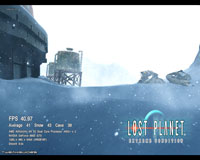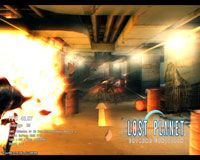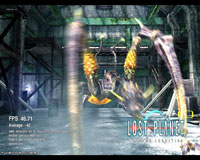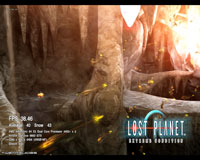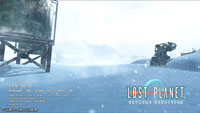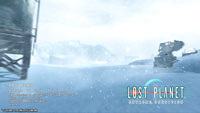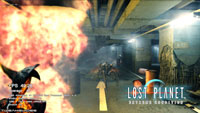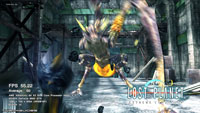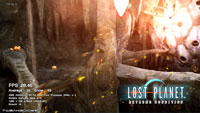Lost Planet: Extreme Condition Tweak Guide
Author: Koroush Ghazi
Last Modified: May 2007
Introduction
Lost Planet: Extreme Condition is a console First Person Shooter game which is soon to be released on PC. This page is currently just a placeholder to show my initial performance results and impressions in both DirectX9 and DirectX10 mode for the Lost Planet Demo. A full tweak guide for Lost Planet will appear here when the full game is released in June. Advanced Tweaking does not yet seem possible for the game.
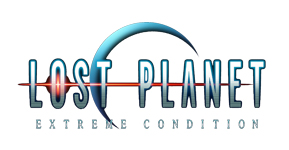
Performance Results
The following results are all on my current system, which includes an X2 4400+ dual core CPU, NForce4 Motherboard, 2GB RAM, 2x74GB Raptor hard drives in RAID0, and I've recently upgraded the graphics card from a 7800GTX to a GeForce 8800GTS 640MB.
DirectX9.0
I ran the Lost Planet DX9 demo under Windows XP SP2, with all the latest drivers, and importantly tweaked according to the TweakGuides Tweaking Companion. Note that for the demo to work you may need to install the latest DX9 Redistributable. The game itself was set to 1280x960 (max possible on my 1280x1024 LCD), all settings at maximum, except no Antialiasing, and no Anisotropic Filtering (Trilinear chosen). Shadow Quality is set to Medium, as this was the highest possible in DX9:
Average FPS Results: 43FPS Snow, 38FPS Cave. Some sample screens from the DX9 demo are provided below:
A sample of DX9 gameplay can be found in this YouTube Video I've prepared, or the High Quality Version (35MB) you can download. There is no DX10 version of the video as yet as I haven't found a suitable video capture utility which works smoothly in DX10.
Update I've now made a short DirectX10 version on YouTube Video or High Quality Version (13MB).
DirectX10
I ran the Lost Planet DX10 demo under Windows Vista Ultimate, with all the latest drivers. The DX10 version of the demo cannot be run under any other OS. Importantly Vista was tweaked according to the TweakGuides Tweaking Companion. Note that for the DX10 demo to work properly, even in Vista you may need to install the latest DX9 Redistributable. If you run an Nvidia card, you will also need to run the 158.42 Forceware or newer.
The game itself was set to 1280x720 (max possible on my 1280x1024 LCD), all settings at maximum, except no Antialiasing, and no Anisotropic Filtering (Trilinear chosen). Shadow Quality is set to Medium first:
Average FPS Results: 53FPS Snow, 34FPS Cave.
Now with Shadow Quality set to High (only possible in DX10), everything else the same:
Average FPS Results: 17FPS Snow, 19FPS Cave.
Some sample screens from the DX10 demo are provided below (at Medium Shadows):
In all cases, whether DX9 or DX10, the game uses a great deal of resources and is very stressful. Both cores of my CPU were working close to 100%, as the game is multithreaded. This is what the Concurrent Operations setting relates to, the number of cores used - mine is set to 2. Concurrent Rendering was also enabled, however I'm still not certain on precisely what this does, since by default graphics cards already perform multiple operations at once. Perhaps it offloads some of the rendering onto the CPU. The Multi GPU setting is only for people who have two physical graphics cards (i.e. SLI users) and should be left Off for single card users.
The game itself runs smoothly on my machine, with no stuttering or major slowdowns on both the DX9 and DX10 versions, though I have quite fast hard drives and a 640MB graphics card. If you do experience stuttering or hitches, it is more likely due to texture loading, as well as general stress on the GPU. Reducing settings like Antialiasing, Texture Resolution and Model Quality will help - these will be examined in more detail in the full guide.
In any case, the game is very stressful, and although I've had no crashes after multiple performance runs, many systems will crash due to the additional heat and stress this game generates. There also appears to be a hard-lock crash which affects some users of this game, and at the moment I suggest turning off Concurrent Rendering to possibly help fix this without any noticeable FPS drop. To improve performance and reduce stuttering the usual advice about turning down/removing any overclocking, and tweaking your system according to the TweakGuides Tweaking Companion applies.
Tweaking
Unfortunately given Lost Planet is a console port, there doesn't appear to be any way to tweak the game at the moment. The game's .ini files can be found under \Documents and Settings\User\Local Settings\Application Data\capcom\lostplanetTrial in Windows XP, and \Users\User1\AppData\Local\capcom\lostplanetTrial in Windows Vista. However these files only seem to contain the same settings which can be altered in-game, and changing them to unsupported values (e.g. altering Resolution) doesn't seem to work.
Conclusion
It appears that DirectX10 gaming can be very stressful, but very beautiful. The main difference between DX9 and DX10 in Lost Planet is that DX10 is more "realistic". The lighting, motion blurring, explosions, shadows, textures and particle effects are much more subtle and more detailed. However DX9 mode still looks great, so certainly you don't have to run in DX10 mode to enjoy the eye candy. The screenshots above can't do justice to how good these effects look when animated.
It should also be remembered that Lost Planet has been made in conjunction with Nvidia, so the game is optimized for Nvidia GPUs. ATI's new HD2900XT performs very poorly in DX10 mode on Lost Planet, as well as incorrectly rendering certain effects. ATI has stated that they will need to optimize their drivers to improve this situation.
If you run Windows Vista and have a DX10 graphics card, given the choice of running in DX9 or DX10 mode, I'd recommend DX10 mode since you get more eye candy, and especially more realistic graphics, running in DX10 mode, at a similar FPS outcome.
Finally, Lost Planet is not necessarily designed from the ground up for DX10, and there are indications that more "mature" DX10 games like the upcoming Crysis will perform better, given we have seen video demos of them running smoothly on 8800 series cards. Plus of course driver optimizations and updates from both Nvidia and ATI will further improve DX10 performance, given Lost Planet is the first playable DX10 game to be released. Indeed Nvidia only just released the new 158.42 Forceware a couple of days ago designed to allow Lost Planet to run in DX10 mode on Nvidia systems.
Update: A full tweak guide will now not be written for the game due to a combination of a lack of tweakability and other commitments.

